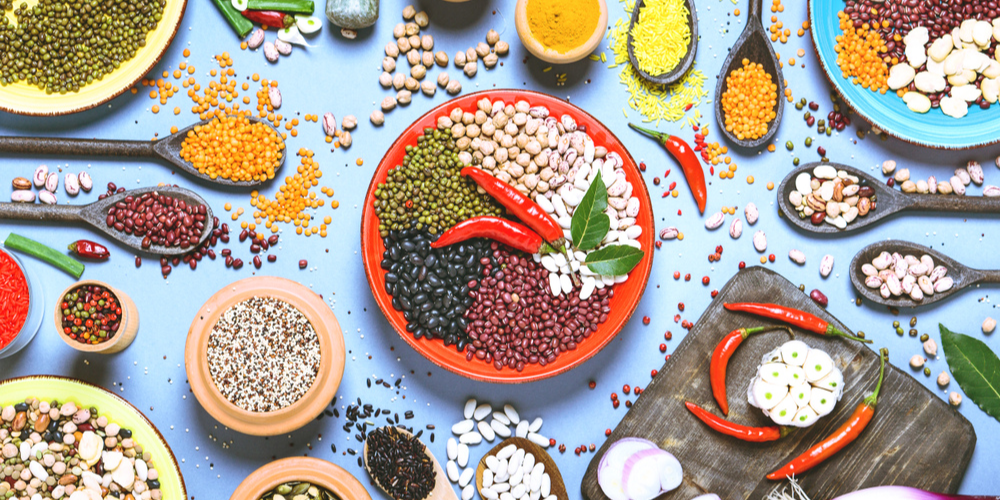Homegrown Happiness: Embracing Local Ingredients
- By Spendlessy
- Updated: Oct 31, 2023

In this artificial world, we should focus on being connected to nature and focus on natural things. In our fast-paced world, it’s easy to overlook the treasures right in front of us. “Homegrown Happiness: Embracing Local Ingredients” can be considered a celebration of the culinary jewels that thrive in our local communities. These ingredients, often harvested at the peak of freshness, provide our dishes with unmatched flavor and vitality.
This embrace of local ingredients is not just about taste and freshness; it’s a commitment to sustain nature, protect the community, and provide food security. When you choose locally sourced products, you are directly supporting small-scale farmers, reducing your carbon footprint, and strengthening the bonds of your community.
SpendLessy helps you to discover the unveiled treasures on a journey that will help us to tantalize your taste buds while also embracing local ingredients, and helping out the local communities.
What is the Importance of Local Ingredients
Offering Flavor and Freshness
Local ingredients are fresher and more flavorful in comparison to the ones that are packed and stored for days and months. Packed products travel hundreds or thousands of miles to reach your plate while on the other hand, local ingredients are often harvested at their peak ripeness and served fresh. They are fresh, full of flavor, and packed with nutrients, ensuring a superior dining experience.
When you buy locally, you can taste the difference. The crunchiness of freshly picked pickles, the freshness of collected mint, and the aroma of freshly baked bread will make you mesmerized.
Maintaining Sustainability
Choosing local ingredients supports sustainability. Buying from local farmers and producers reduces the carbon footprint associated with food transportation. It helps them to earn money as well. Traveling a few miles will help you in fuel reduction and lower greenhouse gas emissions. By supporting local agriculture, you play a role in preserving the environment for future generations.
Supporting Community and Economy
Embracing local ingredients directly contributes to the local economy. When you buy from nearby farmers, you’re supporting small businesses and creating a sense of community. These purchases help to create a positive economic impact, helping to keep small-scale farmers and producers in business. This, in turn, preserves the cultural heritage and traditions of a region.
Food Security
Relying on local ingredients can enhance food security. Achieving food security is not enough, socio-economic, food distribution, and waste issues should be addressed as well. Local communities should work together to become self-sufficient in their crops. Whether it’s a shortage of supply or hunger and malnutrition issues, having good food security will help you out.
How to Embrace Local Ingredients
Grow Your Own
You can grow your food by embracing local ingredients. If you have a small space you can easily cultivate herbs, vegetables, and fruits in containers on your porch or balcony. Homegrown product, no matter how small in quantity, is a source of nutrients and can add a special touch to your meals. By growing your ingredients you will also learn the art of gardening, and learning about how to take care of them will help you to manage time.
Visiting Local Farmers’ Markets
Farmers’ markets are treasure troves of information on local crop production and artisanal goods. These bright and vibrant hubs bring local farmers, producers, and consumers on one page. You can explore a variety of fresh ingredients, from colorful fruits and vegetables to homemade preserves and freshly baked goods. It is good to adopt the habit of visiting your local farmers’ market and connecting with the farmers who grow and create the food you consume.
Joining a Community Supported Agriculture Program
If you’re looking to support local farming and enjoy fresh, seasonal produce, a Community Supported Agriculture (CSA) program is an excellent option. By purchasing a share of a local farm’s harvest, you’ll receive a regular delivery of farm-fresh ingredients. Joining a CSA not only guarantees a steady supply of local produce but also fosters a direct relationship with the farmers responsible for growing it. You’ll gain a deeper understanding of the joys and challenges of local farming, and help support sustainable agriculture in your community.
Restaurants with Farm-to-Table Facility
Many restaurants are committed to sourcing ingredients locally. These farm-to-table establishments work closely with local farmers and producers to create menus that reflect the season’s offerings. By dining at such restaurants, you’re not only treating your taste buds to fresh, flavorful meals, but you’re also supporting the local food system.

Embracing Local Ingredients from Around the World
Embracing local ingredients is a universal concept. While it often emphasizes supporting small-scale farmers and producers in one’s region, it also celebrates local ingredients in various parts of the world. You can easily buy these local ingredients. Here are some examples:
Olive Oil: Italy
Italy is well known for its exceptionally high-quality olive oil, a staple in Mediterranean cuisine. Each region produces its distinct olive oils, each with its unique flavor profile.
By choosing local Italian olive oil, not only do you add a touch of authenticity to your dishes, but you also actively support the hardworking local olive growers in your community. It’s a small choice that can make a big difference!
Rice: Japan
Japanese cuisine is inseparable from rice. By choosing to use locally grown Japanese rice in your sushi, you can take your culinary experience to the next level. Not only does it enhance the flavor and texture of your sushi, but it also helps support local farmers and businesses.
Make a conscious choice to elevate your sushi game and contribute to your community by choosing locally-grown Japanese rice today.
Cheese: France
France is renowned for producing an impressive variety of cheeses, each specific to its region of origin. Enjoying local French cheese offers a diverse range of flavors and textures.
Preserving age-old traditions and craftsmanship is important for producing culinary treasures. It also helps to protect and maintain the cultural heritage associated with these culinary traditions.
Chiles: Mexico
Chiles are an integral part of Mexican cuisine, and each region cultivates its unique varieties. Choosing locally sourced chiles enhances the authenticity and complexity of Mexican dishes.
Chiles in Mexico are integral to its cuisine, offering a fiery kick and diverse flavors. Varieties like jalapeño, habanero, and ancho play a crucial role in dishes, from salsas to mole.
Spices: India
India is the land of spices, with each region offering its distinct spice blends. Sourcing locally produced spices adds depth and authenticity to Indian dishes.
Indian spices include cumin, cardamom, turmeric, cinnamon, and coriander which add depth and flavor to the country’s diverse cuisine.
Spices are the heart and soul of Indian cooking, adding depth, complexity, and heat to a wide range of dishes. They are used in curries, biryanis, masalas, and chutneys.
Olives: Greece
Greece is famous for its olives, and each region produces olives with its unique character. Embracing local olives celebrates Greek tradition and adds a burst of Mediterranean flavor to your meals.
They add a delightful blend of saltiness, richness, and earthy flavors, enhancing salads, pasta, pizzas, and Mediterranean fare. Olive oil, a derivative, serves as a cooking staple and dressing base.
Incorporating Local Ingredients in Your Kitchen
After learning well about growing local ingredients and being inspired how to embrace local ingredients, let’s explore some ways to incorporate them into your cooking:
Seasonal Cooking
Plan your meals around the seasons. Use ingredients that are in peak season to ensure the freshest and most flavorful dishes. This approach not only aligns with the local food movement but also challenges your culinary creativity and helps you explore new dishes.
Preserve the ingredients
When local ingredients are abundant, consider preserving them for later use. You can make jams, pickles, or sauces, or even freeze fruits and vegetables. This way, you can enjoy local flavors throughout the year.
Support Local Producers
Get to know your local farmers and bakers. Develop relationships with them, and learn about their products and processes. By supporting these businesses, you help sustain local food culture and provide food security.
Experimenting with Local Recipes
Explore traditional and contemporary recipes that highlight local ingredients. Whether it’s a regional specialty or a creative dish you come up with, cooking with local ingredients can lead to delightful surprises.
Conclusion
Embracing local ingredients is a journey of flavor, community, and sustainability. From farmers’ markets to farm-to-table restaurants, it’s a celebration of what our region offers. By choosing local, we enrich our plates with freshness, support our neighbors, and reduce our environmental impact. With every bite, we savor the richness of our locality and contribute to a healthier, more resilient, and happier world.
Embracing local ingredients is more than just a culinary trend; it’s a lifestyle that fosters a deeper connection to the land, community, and the food on our plates. Whether you’re indulging in the flavors of your hometown or discovering local delicacies in a far-flung corner of the world, the experience of enjoying locally sourced ingredients is a journey of homegrown happiness.
By choosing local ingredients, you’re not only savoring the freshest and most flavorful produce but also contributing to a more sustainable, resilient, and prosperous community. So, let’s celebrate the incredible bounty of local ingredients that our world has to offer and savor the rich tapestry of flavors that come from our backyard.
